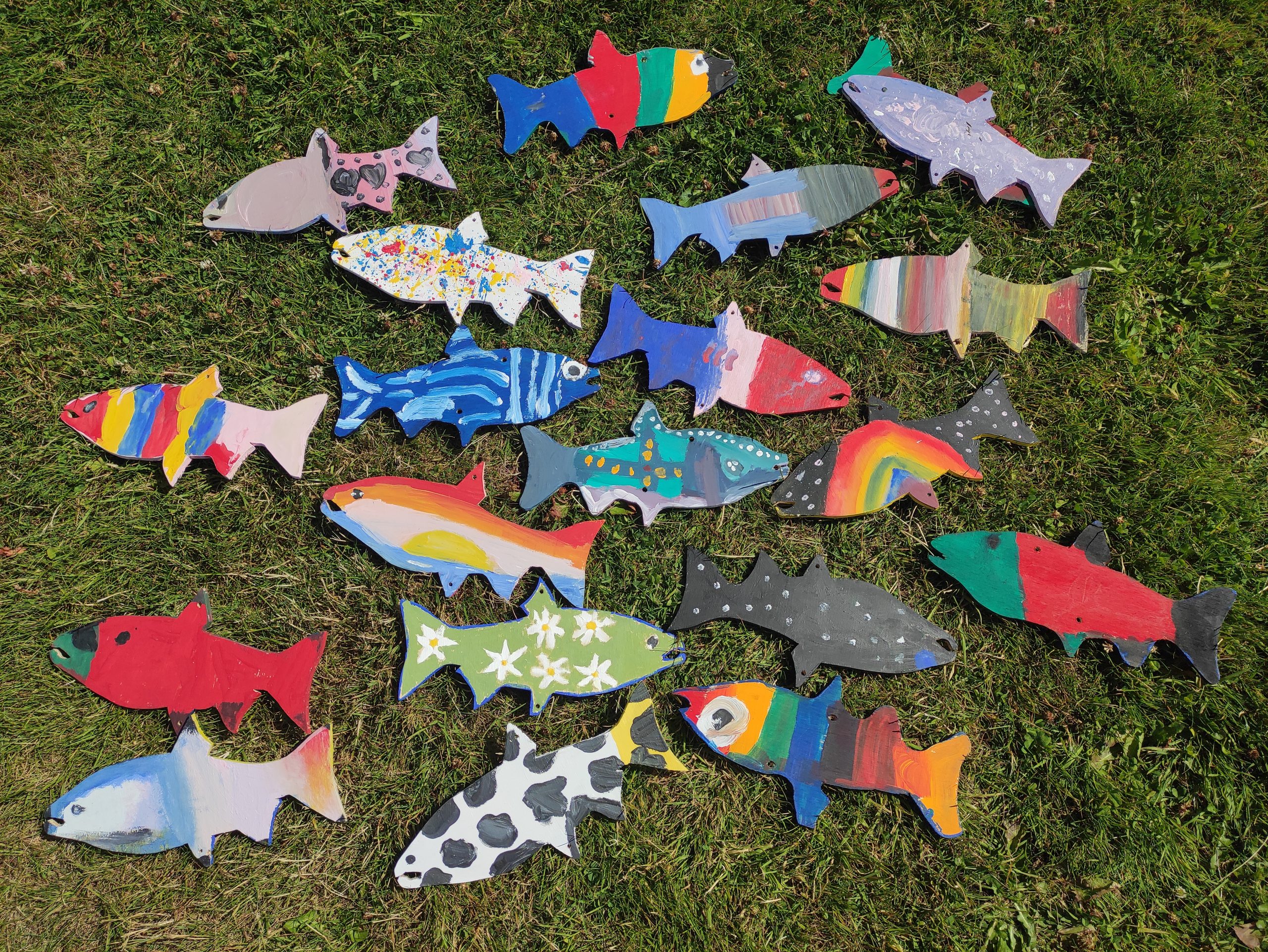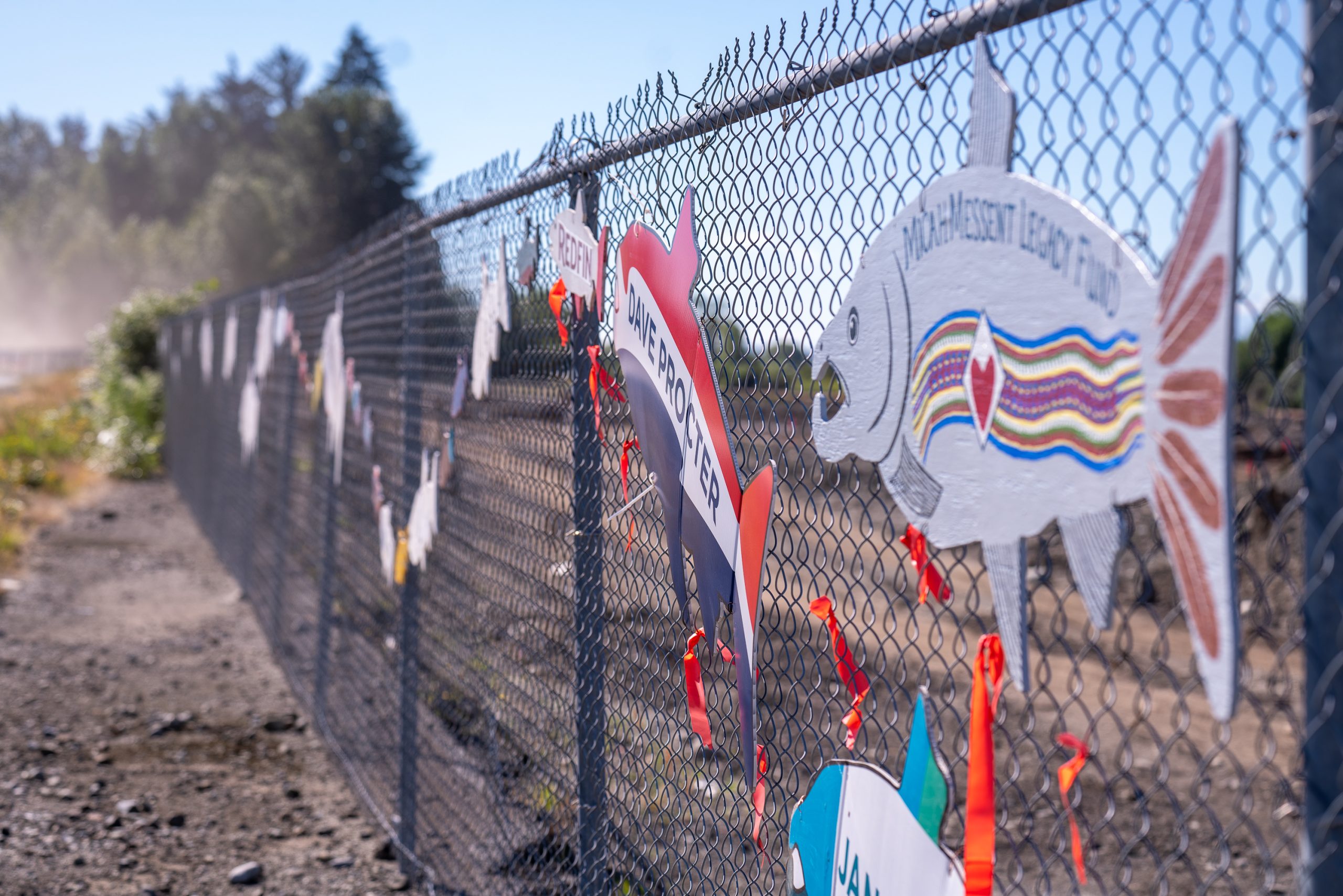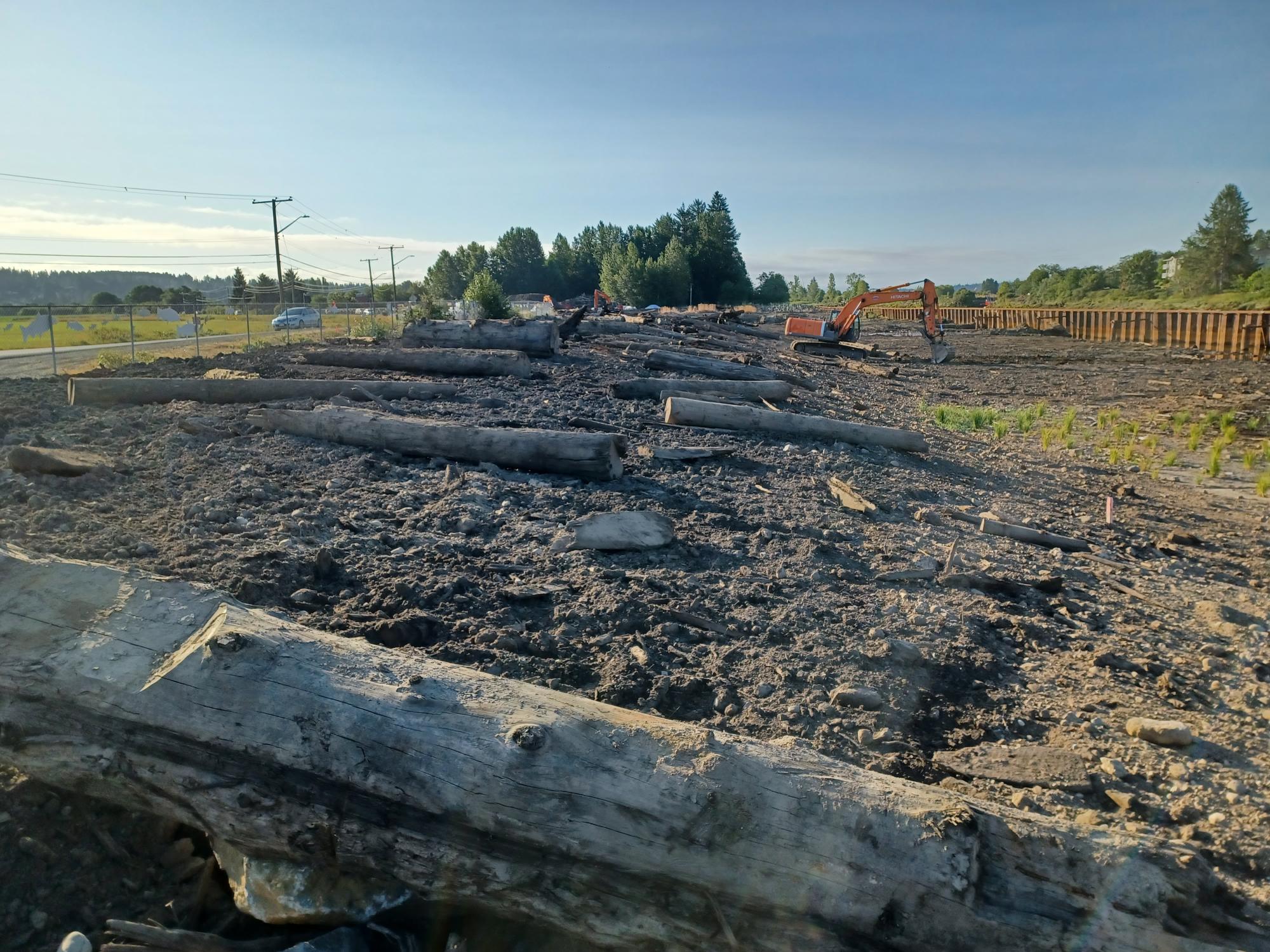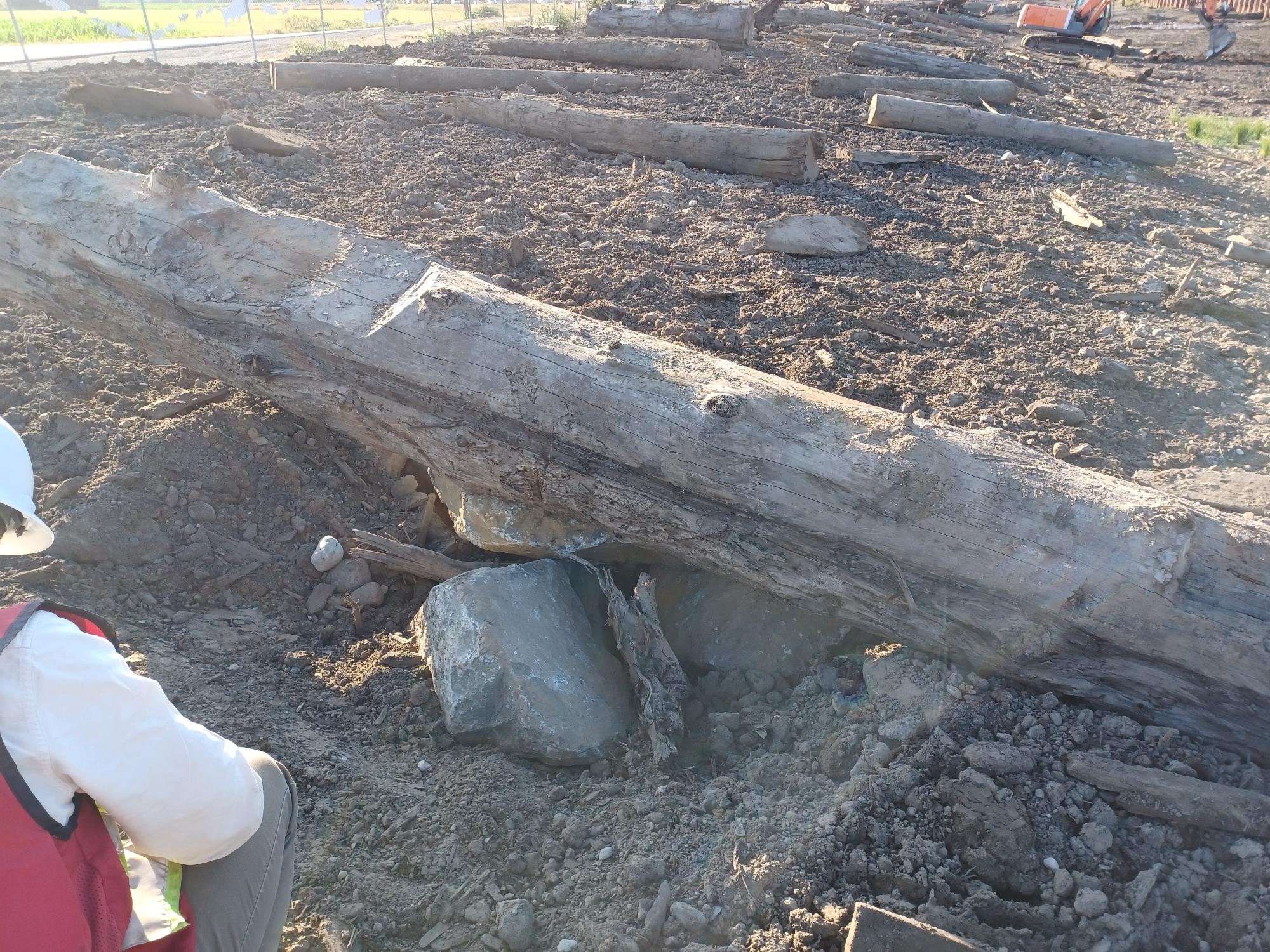Kus-kus-sum Progression
Over the past few months the Kus-kus-sum project has made some significant strides, evoking a sense of hope and admiration among all those involved. The vision of revitalizing the once degraded site into a thriving habitat is now becoming a tangible reality.
The transformation of the site has been an arduous yet rewarding process. Some of the recent achievements these past few weeks has been re-contouring another third of the terrain to its final grade and constructing the island with its surrounding stream channel and deep pool features. The island will be home to trees such as alder, cottonwood, and Sitka spruce to shade the water in the channel. The deep pool will provide a refuge for salmon even at low tide: the deepest portions will remain cool and protected under the canopy of trees that will be planted along the banks. This crucial step not only enhances the aesthetics of the area but also lays the foundation for the creation of diverse habitats.
Habitat complexing has been another crucial aspect of the restoration process, aimed at fostering a safe environment for a variety of local inhabitants, including reptiles and fish. Hibernating areas for reptiles such as snakes are being constructed with a southern facing exposure: the large rocks will provide warmth, while the large woody pieces covering the rocks provide an extra layer of protection. Another type of habitat complexing is the installation of large wood on the banks, which will provide safe cover for fish such as juvenile salmon. We are currently planning exactly where and how to install these pieces of wood with our geohydraulic engineers to ensure they will not move even during strong storm events. Our team’s dedication to promoting biodiversity has been commendable, as they carefully design and implement habitat features to cater to the specific needs of various flora and fauna.
The incorporation of additional native plant species is eagerly anticipated as it promises to be a crucial step towards enriching the ecological diversity of the site. We are looking forward to planting in the fall – stay tuned for volunteer opportunities to plant in late September through early November.
We can hardly contain our excitement as this phase of the initiative takes shape and literally comes to life. The immense efforts invested by volunteers, contractors and staff members are paying off, and the progress so far is a testament to the power of collective action in environmental conservation.
The Kus-kus-sum project stands as a shining example of what can be achieved when people unite for a common cause. As we eagerly prepare for the next stages of development, we are filled with a sense of pride, knowing that our collective efforts are contributing to the restoration and preservation of this ecosystem. With each milestone achieved, we move closer to witnessing the complete restoration of the site.
The video on this page is the most recent drone footage we have of the project, captured on July 21st, 2023 by Rickscopter.
Sponsor a salmon for Kus-kus-sum and help unpave paradise!
Thank you Rick Ward for the video.
Sponsoring a Salmon for Kus-kus-sum



Back in 2019, we launched the Sponsor a Salmon fundraiser as a part of our education and stewardship program, aimed at engaging and teaching students from across the Comox Valley about the local flora and fauna as well as our restoration initiatives. In one component of the program, participating students hand paint a wooden salmon. Each salmon can now be sponsored and hung on the Kus-kus-sum fence for $25, each donation directly contributes to the success of the restoration.
As a result of this program, the fence surrounding the project site now proudly showcases a magnificent salmon gallery, a colorful testament to the creativity and care of our local students.
The Students Keeping it Living program consists of an in-class presentation, a field trip and a follow up art/literature project. This spring our field trips included Courtenay Airpark, Glen Urquhart Creek, Goose Spit, and Kus-kus-sum. We worked with elementary school students from Airport School, Arden School, Queneesh School and the North Island Distance Education School. This year, Project Watershed provided the program to 30 classes or about 600 students! That means, there are a lot of salmon ready for sponsorship!
Sponsor a salmon with a donation of $25 or more and receive a charitable tax receipt for the full amount. The student artist’s name and the donor’s name will be displayed on the back of the salmon, proudly bordering the Kus-kus-sum fence along Comox Road. All proceeds from this initiative will be dedicated to the Kus-kus-sum project, furthering our restoration efforts.



